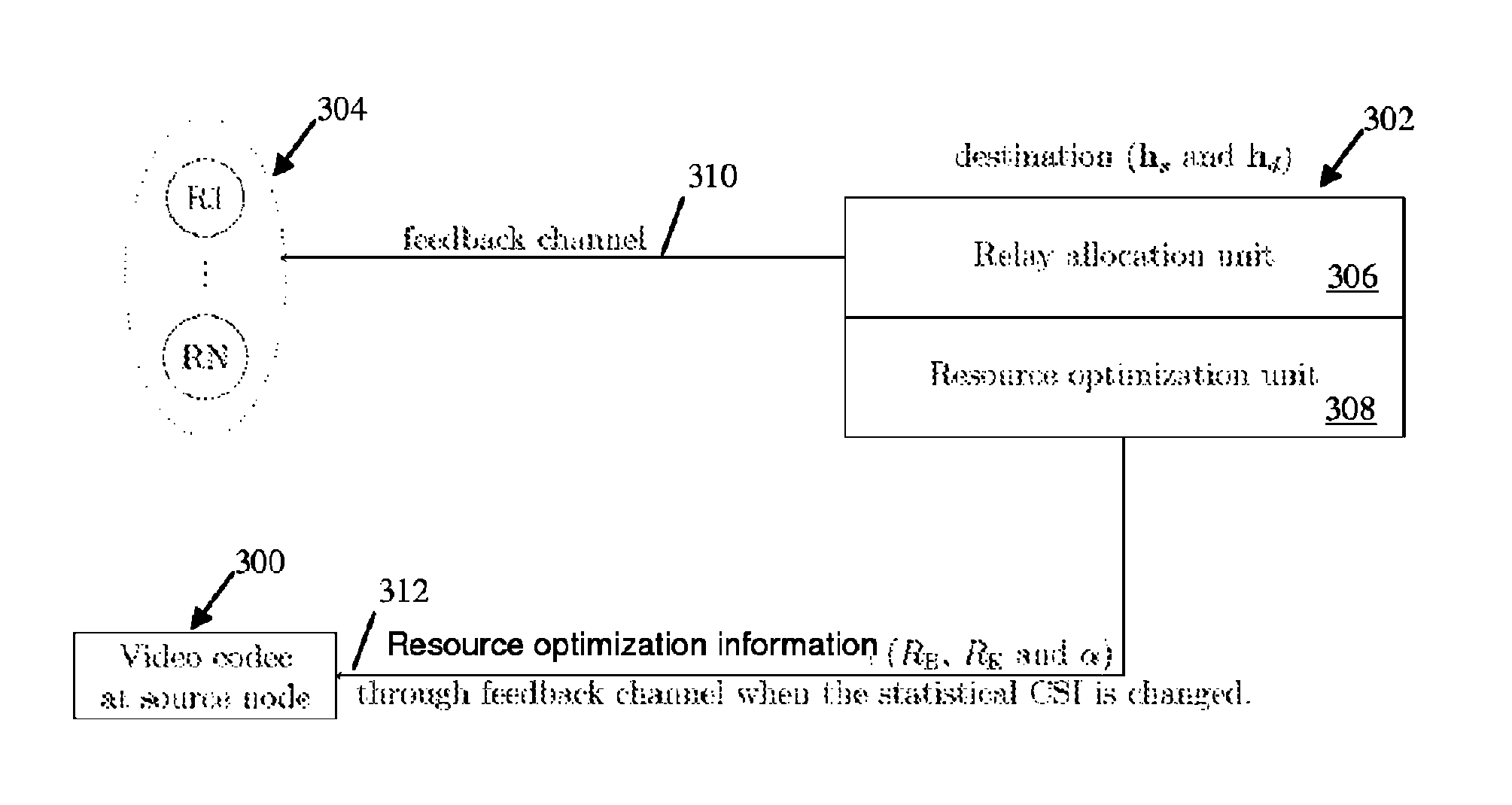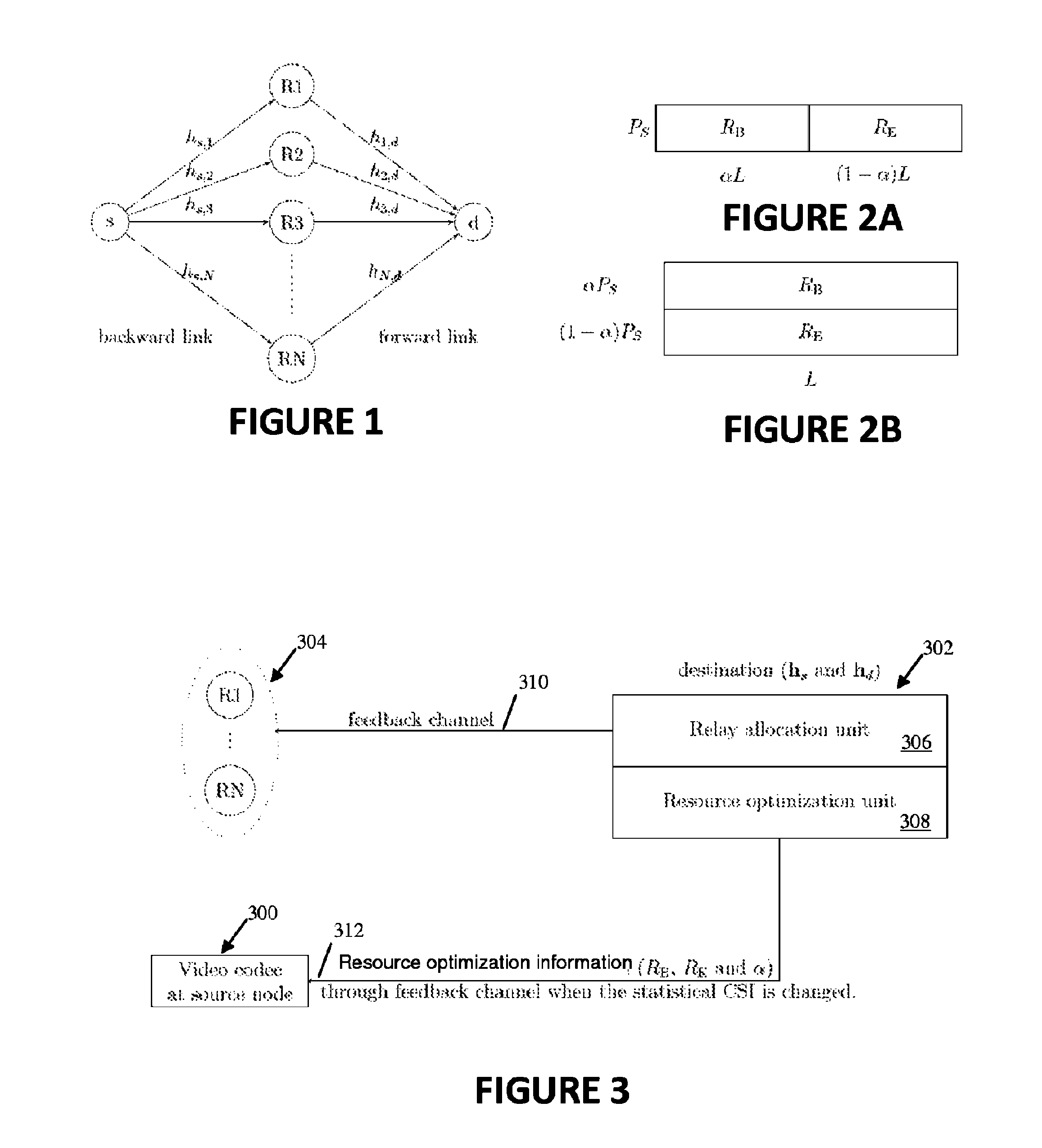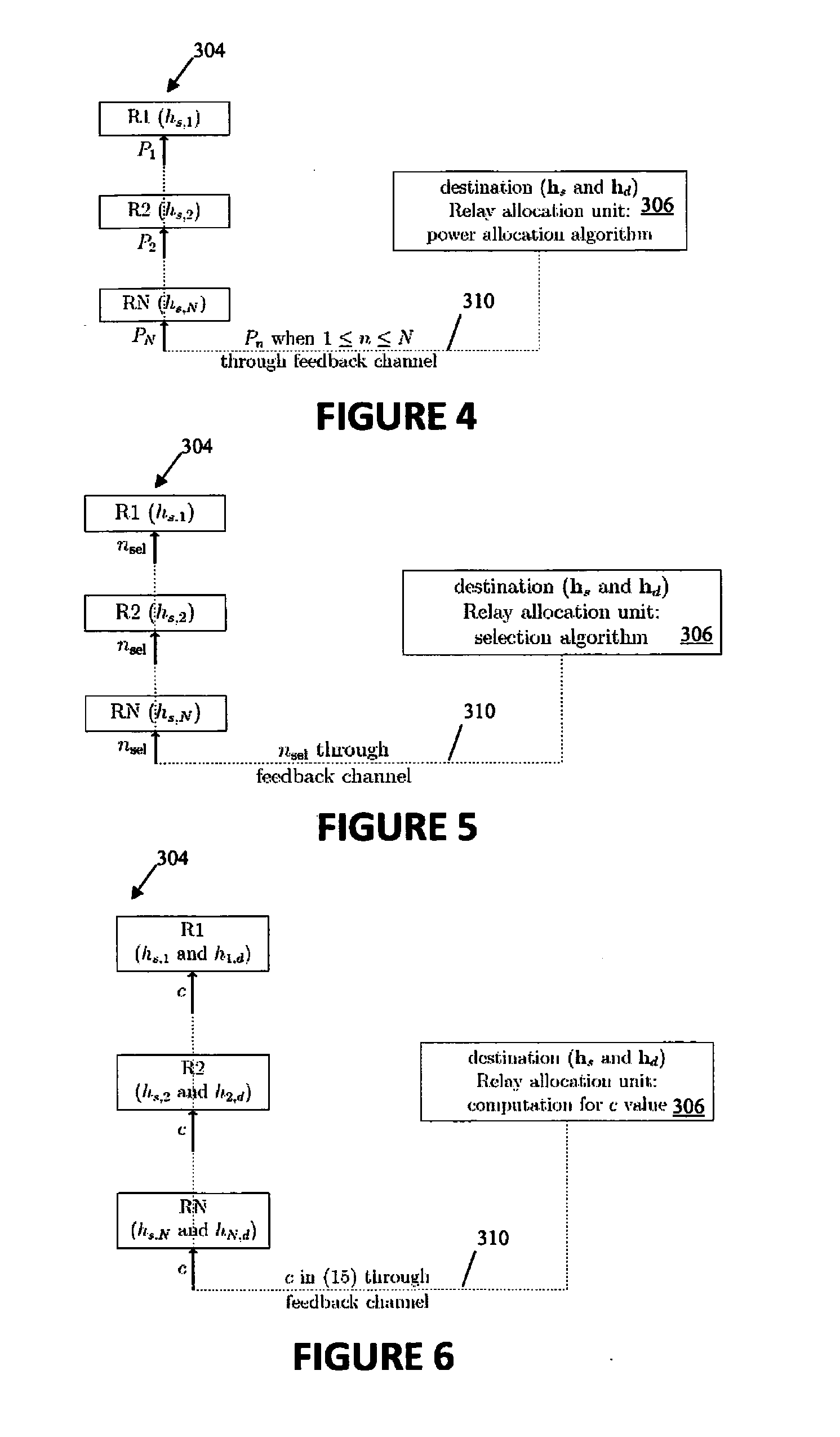Wireless transmission of layered signals in a relay network
a relay network and wireless transmission technology, applied in the field of wireless transmission of layered signals in relay networks, can solve the problems of low perceptive quality, low fixed multimedia base rate for transmission over such wireless communications, and no longer help in increasing transmission reliability, so as to minimize expected distortion and minimize expected distortion
- Summary
- Abstract
- Description
- Claims
- Application Information
AI Technical Summary
Benefits of technology
Problems solved by technology
Method used
Image
Examples
Embodiment Construction
[0045]The preferred embodiment of the present invention comprises a framework and the corresponding methodology for cooperative wireless video transmissions in a relay network with multiple relay nodes R1-RN as shown in FIG. 1. The relay nodes are amplify-and-forward (AF) relays and so perform non-regenerative relaying between a source node s and a destination node d. The link between the source node s and the relay nodes R1-RN is the backward link having a backward link channel gain hs. The link between the relay nodes R1-RN and the destination node d is the forward link having a forward link channel gain hd. In the following detailed description, it is assumed that perfect instantaneous backward and forward link channel gains hs and hd are not available at the source node s, but only at the destination node d.
[0046]The source node s is configured to implement one of two different layered video transmission strategies: progressive transmission as illustrated in FIG. 2A and superpos...
PUM
 Login to View More
Login to View More Abstract
Description
Claims
Application Information
 Login to View More
Login to View More - R&D
- Intellectual Property
- Life Sciences
- Materials
- Tech Scout
- Unparalleled Data Quality
- Higher Quality Content
- 60% Fewer Hallucinations
Browse by: Latest US Patents, China's latest patents, Technical Efficacy Thesaurus, Application Domain, Technology Topic, Popular Technical Reports.
© 2025 PatSnap. All rights reserved.Legal|Privacy policy|Modern Slavery Act Transparency Statement|Sitemap|About US| Contact US: help@patsnap.com



